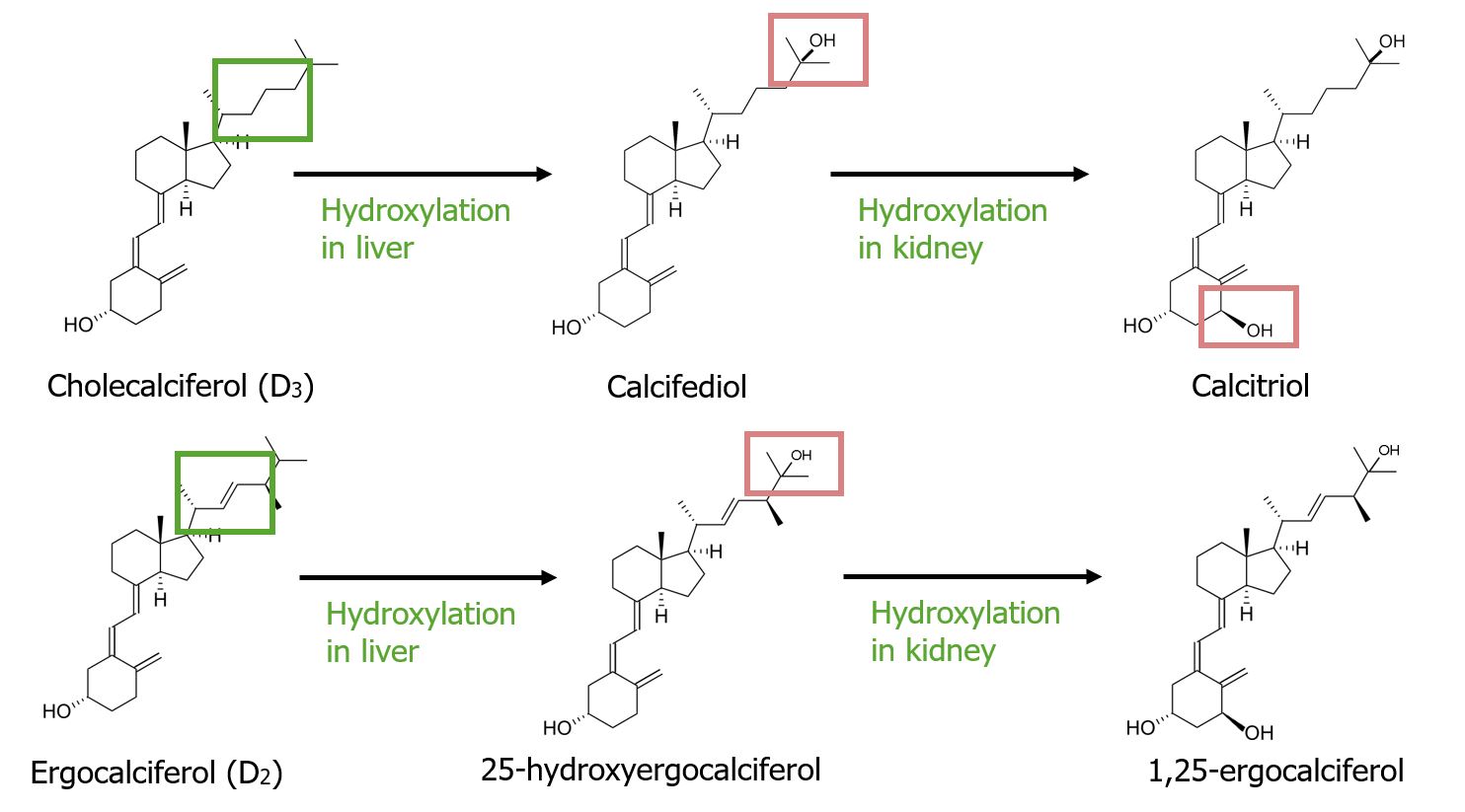Playlist
Show Playlist
Hide Playlist
Vitamin D Deficiency: Vitamin D Production and Effects
-
Slides VitaminDPathologies EndocrinePathology.pdf
-
Reference List Pathology.pdf
-
Download Lecture Overview
00:01 Let’s take a look at Vitamin D pathologies. 00:05 Begin by discussion of Vitamin D by looking at the different ways in which Vitamin D is provided to us in the active form. 00:14 Vitamin D can be taken up by food; Vitamin D can come from the skin with the help of UV light. 00:24 Rarely can Vitamin D deficiency take place in developed countries through dietary deficiency, but it could very much occur with lack of exposure to the sun. 00:37 This then gets into circulation, but this would be the inactive form. 00:41 The first place that it goes to would be to the liver and at the site of liver, it gets 25-hydroxylated. 00:49 This is the major circulating type of Vitamin D, 25-hydroxylated Vitamin D will then turn down to the kidney. 00:58 Here, with the help of 1-alpha-hydroxylase, because of PTH working upon it will stimulate the 1-alpha-hydroxylase resulting in the active compound of calcitriol or 1,25 dihydroxycholecalciferol. 01:11 The actions of this on the intestine… remember that Vitamin D is lipid soluble… the lipid soluble vitamins are ADEK… A, D, E, K. 01:24 The D, Vitamin D, will pass through the membrane, act upon the nucleus and so, therefore, bring about transcription/translation where you can then reabsorb your calcium from the intestine and Vitamin D works upon the kidney to reabsorb both calcium and phosphate whereas PTH only reabsorbs calcium. 01:47 Production effects of Vitamin D 1,25 dihydroxycholecalciferol reabsorbs your calcium. 01:54 Unlike PTH, Vitamin D does not promote renal phosphate wasting. 01:58 In fact, it promotes reabsorption.
About the Lecture
The lecture Vitamin D Deficiency: Vitamin D Production and Effects by Carlo Raj, MD is from the course Parathyroid Gland Disorders.
Included Quiz Questions
The activation of vitamin D requires which enzyme and what is the action of this enzyme?
- 1α-hydroxylase, hydroxylation
- UDP-glucoronyltransferase, glucoronidation
- Glycosyltransferase, glycosylation
- 1α-hydroxylase, glycosylation
- Oxidoreductase, oxidation
What is the most common form of vitamin D found in circulation?
- 25 OH D3
- 7-OH-calciferol
- 1, 25 (OH)2 D3
- 25, 25 OH D3
- Vitamin D2
Customer reviews
5,0 of 5 stars
| 5 Stars |
|
1 |
| 4 Stars |
|
0 |
| 3 Stars |
|
0 |
| 2 Stars |
|
0 |
| 1 Star |
|
0 |
Thank you so much for this beautiful lecture. It will help us so much




